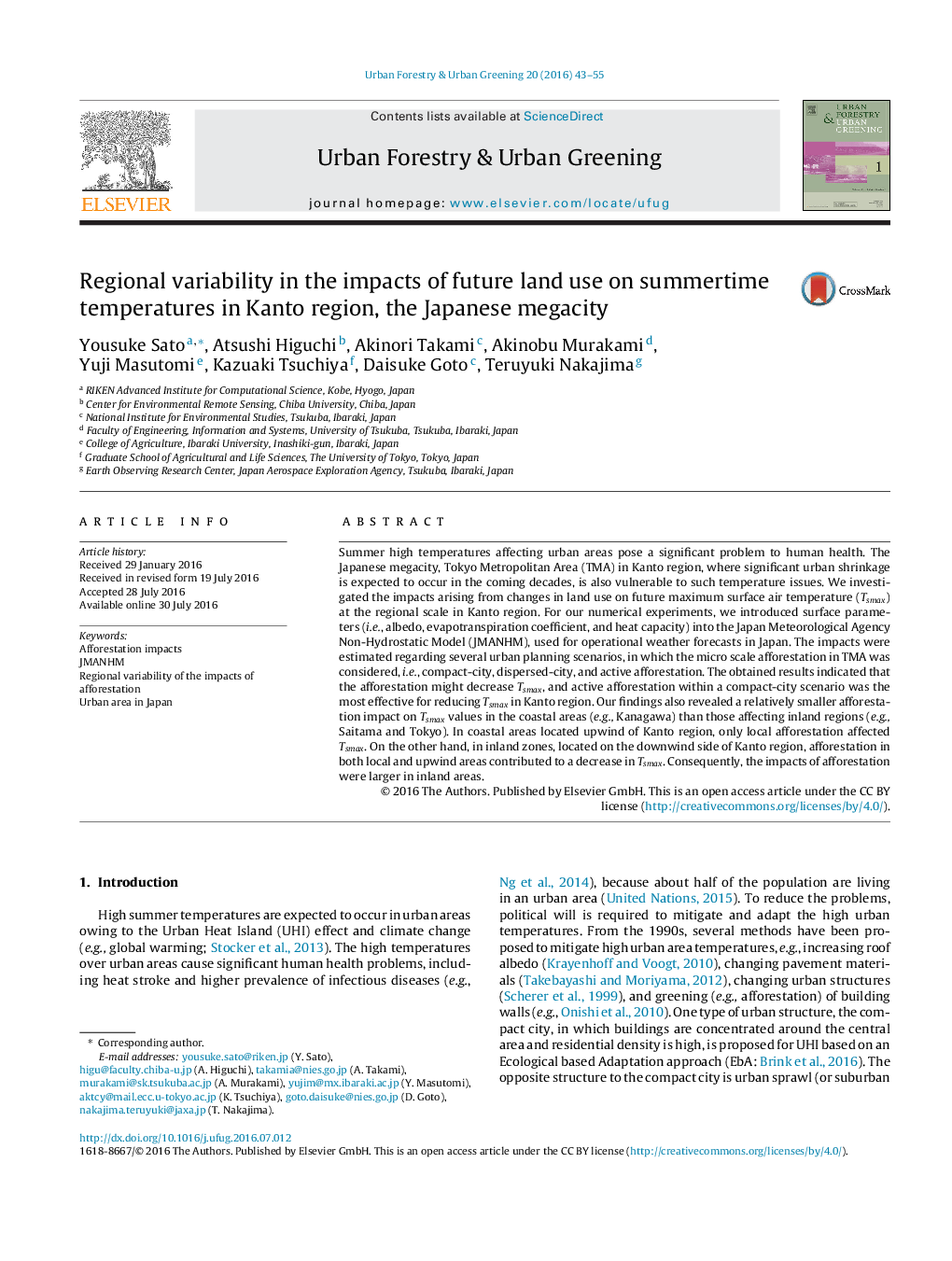| کد مقاله | کد نشریه | سال انتشار | مقاله انگلیسی | نسخه تمام متن |
|---|---|---|---|---|
| 6461882 | 1421870 | 2016 | 13 صفحه PDF | دانلود رایگان |

- Afforestation impacts display regional variability governed by orientation with respect to wind.
- Downwind inland areas benefit from both local and upwind afforestation.
- Afforestation combined with compact cities, effectively decrease mean surface air temperature.
Summer high temperatures affecting urban areas pose a significant problem to human health. The Japanese megacity, Tokyo Metropolitan Area (TMA) in Kanto region, where significant urban shrinkage is expected to occur in the coming decades, is also vulnerable to such temperature issues. We investigated the impacts arising from changes in land use on future maximum surface air temperature (Tsmax) at the regional scale in Kanto region. For our numerical experiments, we introduced surface parameters (i.e., albedo, evapotranspiration coefficient, and heat capacity) into the Japan Meteorological Agency Non-Hydrostatic Model (JMANHM), used for operational weather forecasts in Japan. The impacts were estimated regarding several urban planning scenarios, in which the micro scale afforestation in TMA was considered, i.e., compact-city, dispersed-city, and active afforestation. The obtained results indicated that the afforestation might decrease Tsmax, and active afforestation within a compact-city scenario was the most effective for reducing Tsmax in Kanto region. Our findings also revealed a relatively smaller afforestation impact on Tsmax values in the coastal areas (e.g., Kanagawa) than those affecting inland regions (e.g., Saitama and Tokyo). In coastal areas located upwind of Kanto region, only local afforestation affected Tsmax. On the other hand, in inland zones, located on the downwind side of Kanto region, afforestation in both local and upwind areas contributed to a decrease in Tsmax. Consequently, the impacts of afforestation were larger in inland areas.
Journal: Urban Forestry & Urban Greening - Volume 20, 1 December 2016, Pages 43-55